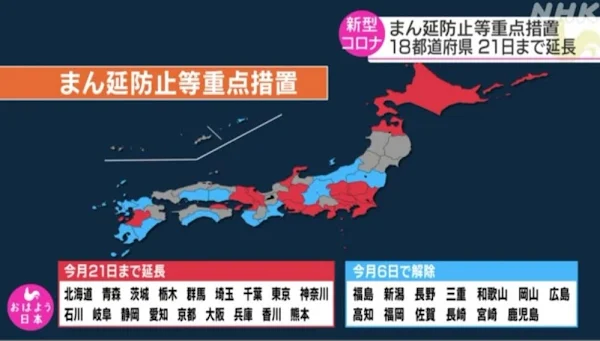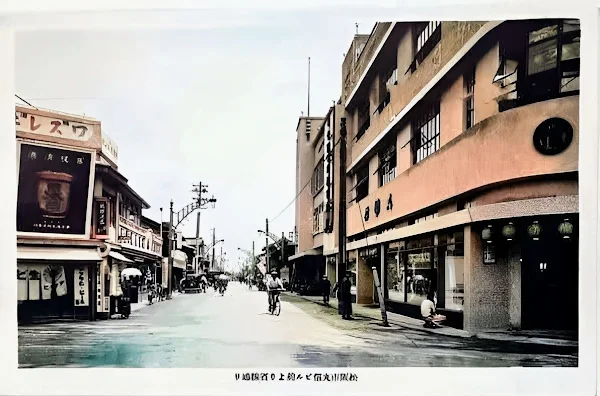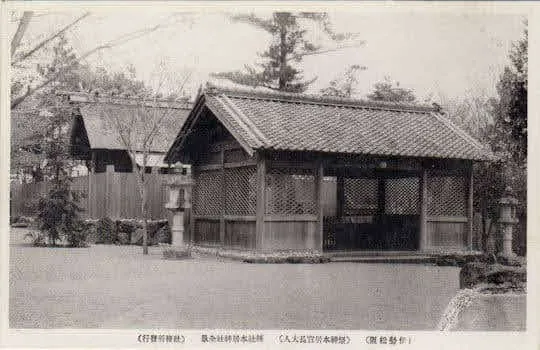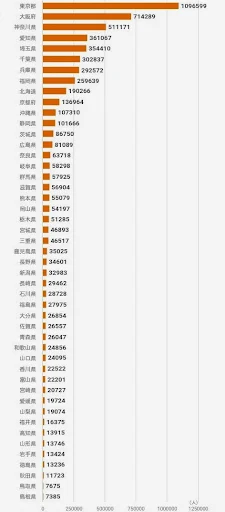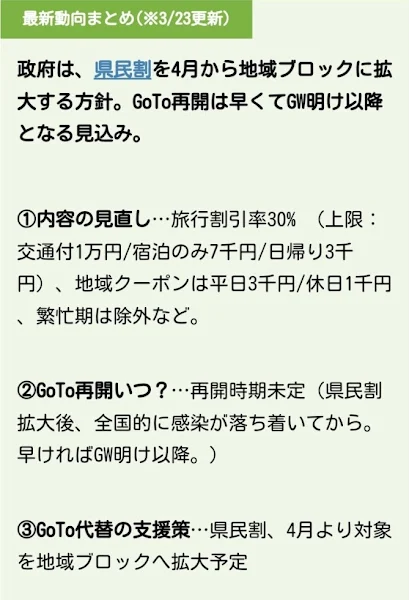【日本の感染者と重傷者と死亡者数の推移(日毎) 2月28日現在】Number of infected and seriously injured and fatalities in Japan (per day), As of February 28
【2月28日現在のPCR検査件数】PCR tests status as of February 28
【開国のすすめ】Recommended opening the country 三重ふるさと新聞 2月24日版
【松阪は豚も極める】Matsusaka aims for the ultimate also the pigs (pork)
今年の1月1日から、RCEP(地域的な包括的経済連携協定)が発効した。 世界のGDP、貿易、人口の30%を占めるこの巨大なFTA(自由貿易協定)には、ASEAN 10か国、日本/中国/韓国、オーストラリア/ニュージーランドを含む合計15か国が参加。日本の場合、貿易の46%を占めるとされる。日本が期待しているGDP増加の腹積もりは、工業製品輸出が主たるものだ。
しかし、過去30年間賃金が上昇していない日本では、関税引き下げ・貿易円滑化→生産性向上→賃金上昇→実質所得上昇→消費・貯蓄・投資増加→GDP上昇の推計モデルは有効ではない。また、農林水産物については、農水省が、関税が引き下げられても生産基盤強化政策により国内生産が減らないという建前をそのまま試算モデルに入れているので、輸入の悪影響が小さすぎる可能性が高いのだ。なにしろRCEPの日本の関税撤廃率は、工業が90%超と高いのに対し、農業は50~60%台と低く、工業製品中心の貿易促進である。それも中国の下請け、つまり日本の対中国輸出の3分の1、経産省によると年5兆とされる自動車部品の輸出だ。期待するのはそこでの関税撤廃効果であり、農水省が試算を渋ったので農産品への中長期的影響は不明となっている(2021年4月の参院本会議で、農業への影響試算をしない理由を問われた農水大臣は、撤廃品目は「すみ分けができている」ので、国内農業への「特段の影響はない」からと回答している)。しかも、現在の得意先である台湾や香港はRCEPに参加してはいない。要するに、地域経済を支える農業および観光経済には、RCEPは期待できないということである。
欧米などの先進国事例みると、コスト競争に晒されやすい工業製品の輸出よりもブランディングによる農業とサービス貿易にウェイトを移す国が増えている。我が国においても地域ブランドのプロモーションこそが急務だといえる。それがヒト・モノ・カネの移動につながるからだ。
松阪牛で知られる三重県松阪市。今、ここでは豚もブランディングの最中にある。松阪豚とは、松阪生まれの良質な豚を飼育途中で選抜し、220日間育てたLWD(ランドレース、大ヨークシャー、デュロック)三元交配豚のことである※。飼料には植物蛋白のマイロ麦と大豆を多く使用し、免疫力を高める乳酸菌と酵母を配合したオリジナルのものを与え、合成タンパクなどの加工餌は一切使用していない。また、抗生物質は免疫力の弱い幼少期にワクチンを少量投与するのみで、その後は薬剤を一切投与せず飼育されている。
220日飼育された松阪豚の特徴は、松阪牛を彷彿とさせる霜降りで、その食感は柔らか滑らかで肉本来の味わいが深く、豚独特の臭みがないので茹でても灰汁が出ない。また、「つきたてのお餅」に例えられる長期育成による脂は、人肌で溶け出すほど融点が低く、水のようにさらさらで調理時には薄く伸びる。これは松阪豚の純白の脂肪酸組成によるもので、他のブランド豚に比べると必須脂肪酸のひとつであるリノール酸や、悪玉コレステロールを減らすと言われるオレイン酸などの不飽和脂肪酸を多く含むからである。また、多量接種により心臓疾患のリスクを高めてしまうパルミチン酸などの飽和脂肪酸の含有量が少ないという分析結果もある。これは高齢化社会に最適だといえるだろう。
本居宣長や三井高利を育くんだ松阪は、古来、情報の拠点となってきた。官民連携を通じ、地域ブランドの更なるプロモーションが必要である。
From January 1st of this year, RCEP came into effect. A total of 15 countries, including 10 ASEAN countries, Japan / China / Korea, and Australia / New Zealand, will participate in this huge FTA, which accounts for 30% of the world's GDP, trade, and population. for Japan, it will account for 46% of trade. Japan's expectations for an increase in GDP are mainly due to industrial product exports.
However, the estimation model of tariff reduction / trade facilitation → productivity improvement → wage increase → real income increase → consumption / savings / investment increase → GDP increase is not effective in Japan, where wages have not risen for the past 30 years. In addition, For agriculture forestry and fishery products, the MAFF has inserted into the estimation model the premise that domestic production will not decrease due to the policy of strengthening the production base even if tariffs are reduced. The negative impact of imports is likely to be too small. After all, the tariff elimination rate in Japan for RCEP is high at over 90% for industry, while it is low at 50-60% for agriculture. It is a trade promotion centered on industrial products. It is also a subcontractor of China, that is, one-third of Japan's exports to China, and exports of automobile parts, which is estimated to be 5 trillion JPY a year according to the METI.
What they expect is the effect of eliminating tariffs there, and the medium- to long-term impact on agricultural products is unknown, because the MAFF did not make a trial calculation (At the House of Councilors plenary session in April 2021, when asked why he did not estimate the impact on agriculture, the Minister of MAFF replied, "Because the items to be abolished have been separated, there is no particular impact on domestic agriculture."). Moreover, current customers such as Taiwan and Hong Kong have not participated in the RCEP. In short, is that RCEP cannot be expected from the agricultural and tourism economies that support the regional economy.
Looking at the cases of developed countries such as Europe and the United States, more and more countries are shifting their weight to branding agriculture and service trade rather than exporting industrial products that are exposed to cost competition. It can be said that promotion of regional brands is an urgent task in Japan as well. that is because it leads to the movement of manpower goods and capital.
Matsusaka City, Mie Prefecture, known for its Matsusaka beef. Pigs are also in the process of branding here, now. What Matsusaka pigs are LWD (Landrace, Large White, Duroc) ternary mating pig ※ that were selected from high-quality pigs born in Matsusaka during and raised for 220 days. The feed uses a lot of plant proteins, mylo wheat and soybeans, and is given an original mixture of lactic acid bacteria and yeast that enhances immunity, and does not use any processed feed such as synthetic protein. In addition, antibiotics are bred only by administering a small amount of vaccine in early childhood when the immunity is weak, and after that, no drug is administered.
The characteristic of Matsusaka pigs (pork) raised for 220 days is the marbling that is reminiscent of Matsusaka beef, and its texture is soft and smooth, and the original taste of meat is deep. and, because it doesn't have the odor peculiar to pork, lye does not come out even if it is boiled. In addition, the fat produced by long-term breeding, often referred to as "freshly made rice cake," has a low melting point so that it melts at the human body temperature, and spreads thinly during cooking. this is due to the pure white fatty acid composition of Matsusaka pork. Compared to other brand pigs, it because contains more unsaturated fatty acids such as linoleic acid, which is one of the essential fatty acids, and oleic acid, which is said to reduce bad cholesterol. At the same time, there is an analysis result that the content of saturated fatty acids such as palmitic acid, which increases the risk of heart disease by high-dose inoculation, is low. also, there is an analysis result that the content of saturated fatty acids such as palmitic acid, which increases the risk of heart disease by high-dose inoculation, is low. this can be said to be optimal for an aging society.
Matsuzaka is raised Norinaga Motoori and Takatoshi Mitsui, has been a base for collecting information since ancient times. further promotion of regional brands is needed through public-private partnerships.
※ LWD三元交配豚 LWD ternary mating pig
ランドレース(L) 背脂肪が薄く、赤肉率が高い品種。発育が極めて早い。
Landrace (L) A variety with a thin backfat and a high rate of red meat. very fast grow.
大ヨークシャー (W) 赤肉率が高く、加工用の原料として高い評価を得る。ランドレースについで多数飼育されている。
Large White (W) High red meat ratio and highly evaluated as a raw material for processing. It is the second most fattened after Landrace.
デュロック(D) アメリカ原産の赤肉の品種。筋肉内への脂肪がつきやすく、シマリがあり柔らかい。
Duroc (D) Red meat breed native to the United States. It is easy for fat to adhere to the muscles, and it is firm and soft.
【カラーで甦る松阪絵葉書 ②】The Matsusaka postcards has been revived in color ②
【福島第一原発爆発事故による諸外国・地域の規制措置】Regulatory measures in foreign countries or regions due to the explosion accident at the Fukushima Daiichi Nuclear Power Plant
ウクライナの原子力施設に対するロシア軍の攻撃は、2011年の福島第一原発の爆発事故を想起する。放射性物質汚染に関する懸念は非常に長期に及ぶ。今年2月21日現在、まだ41の国や地域が何らかの規制を継続中だが、最早これは懸念ではなく、政治的あるいは貿易上での外交カードと化している。
The Russian military's attack on Ukrainian nuclear facilities is reminiscent of the 2011 Fukushima Daiichi nuclear power plant explosion. Concerns about radioactive contamination are very long-term. As of February 21, this year, 41 countries or regions are still in the process of some regulation, but it is a political or trade diplomatic card rather than a concern no longer.
【2022年1月の国際収支】Balance of Payments for January 2022
3月8日、財務省は1月の国際収支を発表した。経常収支は1兆1887億円の赤字である。
貿易収支も1兆6043億円の赤字で、旅行収支は受取429億円、支払307億円で、123億円の黒字だ。
航空旅客は19億円の黒字、海上旅客は1億円の赤字。その他サービスも6506億円の赤字。サービス収支全体では7379億円の慢性赤字である。観光庁によると、1月のインバウンドはインド人、アメリカ人、中国人を中心に1万7800人、日本人のアウトバウンドは7万5000人だった。
低賃金を前提とする工業製品輸出の時代は明らかに詰んだようである。半世紀前の欧州に倣えば、何を伸ばすべきかは一目瞭然だ。即ちそれは地域の歴史や文化、食であり、その為には言い値で売れる人気のブランディングが必要である。
On March 8, the Ministry of Finance announced the balance of payments for January. the current account balance is a deficit of 118.87 billion JPY.
The trade balance is also a deficit of 1604.3 billion JPY, and the travel balance is a surplus of 12.3 billion JPY, by the credit 42.9 billion JPY and the debit 30.7 billion JPY.
The air passengers is a surplus 1.9 billion JPY. the sea passengers is a deficit of 100 million JPY. also the other services have a deficit of 650.6 billion JPY. the overall of the service balance is still a deficit of 737.9 billion JPY. According to JNT, the number of visit arrivals (inbound) in January was 17,800, mainly Indians, Americans, and Chinese, and the number of Japanese Overseas Travelers (outbound) was 75,000.
The era of industrial product exports, which must be low-wage, seems to be clearly over. looking at Europe half a century ago, it's clear what needs to be improved. That is, it is the history, culture and foods of the region. and for that purpose, branding that gains popularity and sells at the asking price is necessary.
【3月10日現在の感染確認数】Number of confirmed infections as of March 10
47都道府県で確認された感染者数は561万9329人、死者数は2万5734人(昨年の2月17日から今年2月4日までのワクチン接種後死亡者1474人は含まず)。累積死亡率は0.46%となった。
The number of infected persons confirmed in 47 prefectures was 5,619,379, and the number of deaths was 25,734 (Does not include 1,474 deaths after vaccination from February 17th last year to February 4th this year). the cumulative mortality rate decreased to 0.46%.
【松阪観光プロモーション動画】Matsusaka Tourism Promotion Video
【3月20日現在の感染確認数】Number of confirmed infections as of March 20
47都道府県で確認された感染者数は610万1652人、死者数は2万7126人(昨年の2月17日から今年3月4日までのワクチン接種後死亡者1571人は含まず)。累積死亡率は0.44%に減り、「まん延防止等重点措置」は明日をもって終了する。観光客誘致競争が47都道府県で一斉に始まるのだ。
The number of infected persons confirmed in 47 prefectures was 6,101,652, and the number of deaths was 27,126 (Does not include 1571 deaths after vaccination from February 17th last year to March 4th this year). the cumulative mortality rate decreased to 0.44%, and "The important point measures such as prevention of spread:Semi-emergency coronavirus measures" will end tomorrow. the competition to attract tourists begins all at once in 47 prefectures.
【松坂城跡のライトアップ】Illumination of Matsusaka Castle Ruins
【インターナショナル・ツーリズム・ハイライト2021】International Tourism Highlights 2021
「インターナショナル・ツーリズムハイライト2021」がリリースされない為、代わりに「ワールド・ツーリズムバロメーター」を掲載した。No.168の【中国は国際ツーリズムが最重要貿易であることを知らしめた】に書いたが、『ツーリズム貿易』の状況把握が早急に必要だからである。
Since "International Tourism Highlights 2021" has not been released, I posted a "World Tourism Barometer" instead. Although I wrote in No.168‘s [China has taught us that international tourism is a most important trade], because it is urgently necessary to grasp the situation of "tourism trade".
・2020年として比較して、2021年には1500万人の外国人ツーリストがみられた。
・2021年の前半は低調だったが、夏季には北半球で国際ツーリズムは緩やかに回復、第3四半期の業績を押し上げ、ポジティブな勢いは第4四半期まで続いた。
・南北アメリカとヨーロッパは2021年に最高の結果を示した。カリブ海諸国はサブリージョンごとに最高のパフォーマンスを記録した。
・最近の改善は、ワクチン接種の急速な進歩と多くの目的地での旅行制限緩和の中、旅行者の確信の高まりによって推進された。
・2021年の1回の到着時の平均入金額は、鬱積需要による大幅な節約と長期滞在に加え、交通費と宿泊費の上昇により、1,500米ドル(16万3500円前後)を超えた。
・鎖国ディスティネーションの数は2021年11月に最低レベルに減ったが、アジア太平洋地域は未だ鎖国ディスティネーション最大シェアを抱える地域である。
・回復は、新しいオミクロン亜種の出現と世界の一部の地域での感染の急増の中、脆弱で不均一なままである。
・最近の感染症の増加と新しいオミクロン亜種は、一部の国が特定の市場への渡航禁止令と制限を再導入するため、2022年初頭までの回復と自信を再び混乱させる可能性がある。
・アジア太平洋地域は依然として鎖国ディスティネーション最大シェアを持つ地域である。
・ワクチン接種の展開は不均一なまま。
・経済環境:石油価格の高騰、インフレ率の上昇、潜在的な金利上昇、高水準の債務水準、国際サプライチェーンの継続的な混乱。
・機会
・多くの国と市場、主にヨーロッパと南北アメリカでの継続的な回復。
・依然として大きい鬱積需要。
・ワクチン接種展開の進捗。
・2020年と2021年から得られた経験。
・EUデジタルCOVID証明書など、旅行を容易にするためのデジタルツールの活用。
更なる責任 持続可能性、信憑性、地域性:旅行者は、地域社会にプラスの影響を与えることの重要性を信じており、信憑性をますます求めている。
回避 自然、農村観光、ロードトリップが、旅行制限と野外体験の探求により、人気旅行の選択肢として出現している。
長期滞在と更に高い支出 2021年には旅行一回あたりの支出が大きく増え、長期滞在が見られた。
再録【中国は国際ツーリズムが最重要貿易であることを知らしめた】China has taught us that international tourism is a most important trade.
2016年、外貨準備高の急減を憂慮した中国政府は、中国人民の海外旅行による外貨流出を厳しく制限した。それだけでなく、外国人によるキャリングアウトもである。さらに新型コロナのパンデミックは、経常収支を大幅に改善するのに貢献した。
In 2016, the Chinese government severely restricted the outflow of foreign currency by the Chinese people's overseas travel, fearing a sharp decline in foreign exchange reserves. Not only that, also a carry-out by foreigners. in addition, the novel coronavirus pandemic was able to significantly improve the current account balance.






